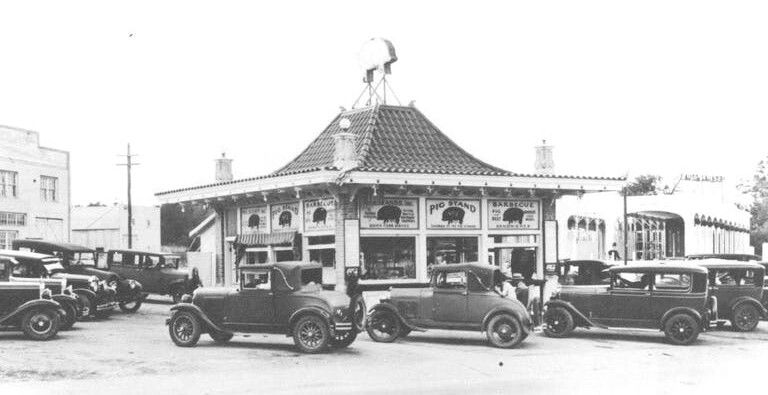We’re in Dallas, passing the southwest corner of Fort Worth Pike Road and Chalk Hill Road. It’s 1921 and the smell of charred pork, sour relish and excitement wafts through the air. Jesse G. Kirby (of Kirbys fame) is busy opening what is often credited as America’s first ever drive-in restaurant, the Pig Stand, a concept that would pave the way for the drive-thru revolution of the swingin’ 60s, where showing off your shiny motor was as important as the food.
The drive-thru model hasn’t changed since the 60s. Until now. Those first car hops are being replaced by something equally, if not more, revolutionary.
Fast forward
The success formula for the 60s drive-thru can be imagined as a simple Venn diagram, where speed, accuracy and service all overlap. In the twenty-first century, one hundred years after the Pig Stand sold its first sandwich, drive-thru’s Venn diagram looks vastly different. Imagine now a Venn diagram where personalization, ease, convenience and frictionless experiences – all enabled by digital – overlap. This is where success lies.

Options and flexibility
This major shift reflects the opportunity today’s drive-thru presents brands and their guests. Drive-thru has become a blend of virtual and physical, where a seamless integration of technology connects design, architectural innovation and traditional manpower to offer a vast range of dining options at the guest’s preferred convenience. The options include on-the-go ordering, open air seating, curb side pick-up, automated lockers, third party delivery, walk-ins, self-serving kiosks and fast track points.
At this point, it is impossible to ignore the wider societal shifts that have led to this demand for on-the-go, omnipresent convenience; increased technology acceptance, payments innovation, lifestyles that value time-saver services and a pandemic that has accelerated demand for contactless dining experiences.
Enhancing connections
The drive-thru connects guests to unique brand interactions wherever they are – on the road, at home, at work and anywhere between. Via the smartphone and location services like GPS, the guest experience now sits between hyper convenient and hyper experiential. For brands, the focus is on controlled arrivals, customized ordering and fresh food that’s made to order rather than readymade.
The unification of technology and the physical drive-thru enhances human connection, but never replaces it. It enables an optimum food offering where brands can switch up menu items based on factors like time of day, weather, drive-thru times and regional menu item popularity. Brands can also make personalized suggestions to guests based on past purchases to foster and improve brand loyalty, whether it’s online, in-app, in the restaurant or at the drive-thru.

The journeys that matter
The drive-thru is a true blend of design, architecture, technology and brand values. It represents a host of shifts; from the evolving relationship between brands and guests to the transformation of the fast casual food industry that puts the overlapping layers of connection between guest, brand, location and space in poll position. The drive-thru is the perfect example of how leaders in guest experiences can leverage shifts in behavior and digital innovation to design the journeys that matter.
